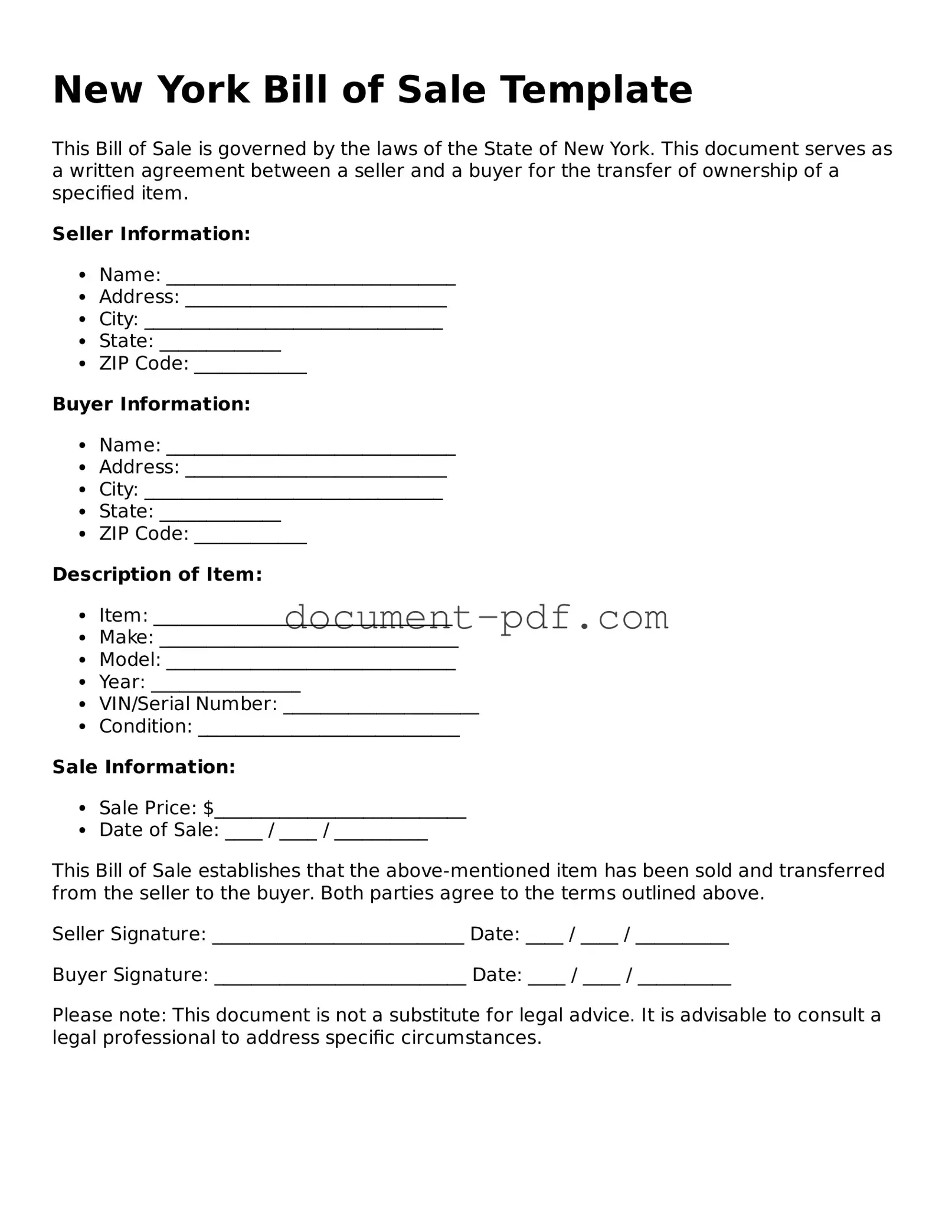Attorney-Verified New York Bill of Sale Template
A New York Bill of Sale is a legal document that serves as proof of the transfer of ownership of personal property from one party to another. This form outlines essential details such as the buyer and seller's information, a description of the item being sold, and the sale price. For those looking to complete a transaction in New York, filling out the Bill of Sale form is a crucial step; click the button below to get started.
Access Bill of Sale Editor Here
